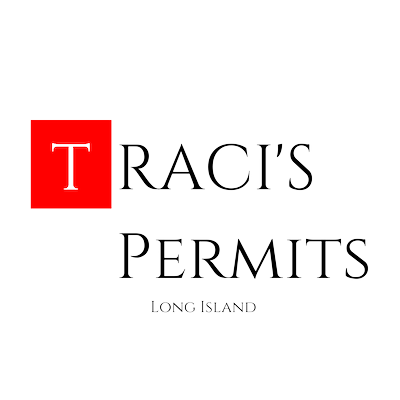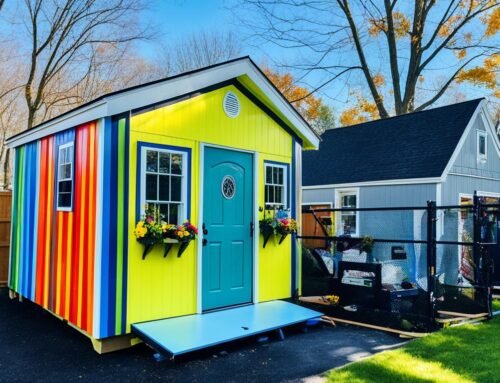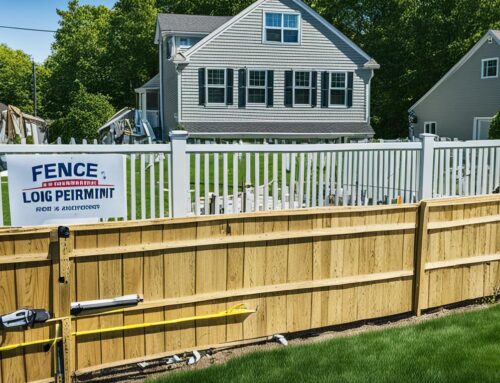Getting a home renovation done right in Long Island needs a permit. Without it, you could face big legal problems and lose money. A huge interest in retaining walls is shown by over 18 million reads online. Permits for a retaining wall ensure your work follows local rules. They also keep your structure stable and prevent erosion in Nassau and Suffolk.
Thinking about adding a retaining wall to your Long Island home? Tracis Permits makes getting the needed permits easy. We know all about local rules, inspection needs, and how to avoid renovation mistakes. This guide will tell you why you need a permit for your retaining wall. And how Tracis Permits can help every step of the way.
Key Takeaways
- Local permits ensure compliance with Long Island building codes.
- Obtaining a permit prevents legal and financial issues in home renovation projects.
- Permits help maintain structural stability and prevent erosion.
- Tracis Permits offers expert assistance in navigating local regulations.
- Avoid common challenges by securing the right permits for your retaining wall.
Understanding the Necessity for a Retaining Wall Permit
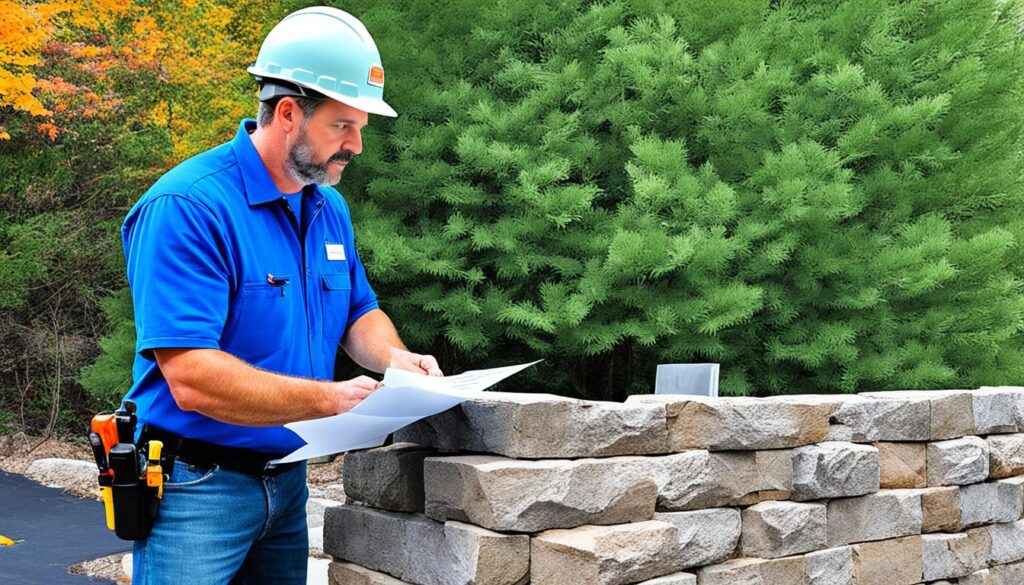
Before you build or change a retaining wall in Long Island, you need a permit. This makes sure your wall is stable and meets local rules. You’ll work with the town’s building department, fill out forms, and go through an approval process. This keeps your property safe and legal.
What is a Retaining Wall Permit?
A retaining wall permit is official permission from the local building department. It lets you build or modify a retaining wall on your land. In Brookhaven, for instance, you need a permit to move 2,500 square feet of soil or change the land level by more than 24 inches. You also need a permit to build a wall over two feet tall.
Getting a permit takes different times for homes and businesses. In Brookhaven, it’s about 5 days for homes and 10 days for businesses. The cost depends on your project size. You can get more info from your town’s website or the permit office. Sometimes, for steep lands, you might need to check the soil stability 20 feet deep.
Why a Permit is Important for Stability and Compliance
Having a permit keeps your wall strong and within local building rules. If your soil is not good, you might need to dig 48 inches to make it strong. Brookhaven offers different permits for homes, businesses, tearing down buildings, and retaining walls. These permits check that your construction is safe, uses good materials, and doesn’t harm your neighbors or the drainage.
If your project is near important natural areas, you have to survey your site. Without a permit, you could face fines, trouble when selling your property, and safety risks. The building department plays a key role in making sure projects are done right.
By carefully managing your project and getting the right permits, you can avoid problems and keep your property safe. The town’s building department helps make sure every project follows the rules. This makes our communities safer for everyone.
| Municipality | Permit Requirement | Additional Requirements |
|---|---|---|
| Loudon | Yes | Height restrictions, soil quality check |
| Fairfax | Yes | RPA delineation for specific areas |
| Montgomery | Yes | Core sampling for steep slopes |
| City of Arlington | Yes | Approval process varies by project type |
| City of Falls Church | Yes | Extensive application and project plans needed |
| City of Reston | Yes | Proof of insurance coverage required |
Steps to Obtain a Retaining Wall Permit in Long Island
Getting a retaining wall permit in Long Island ensures you follow local rules and build safely. Here’s a step-by-step method for homeowners who want to get a permit:
Initial Consultation and Planning
The first step is an initial consultation and planning in detail. Working with experts like architects or building advisors makes sure your plans meet local retaining wall rules. They often visit the site and look at everything closely to prevent any problems early on.
Submitting the Application
When planning is done, the next part is submitting the application to the building department. You need to prepare and turn in detailed construction plans that follow local building laws. Having all your paperwork ready makes this process smoother and quicker.
Inspection and Approval
After you submit everything, the building department must inspect your project. Inspectors check the site to make sure your plans fit the retaining wall rules. If you pass the inspection, you get the approval to start building. Fixing any issues quickly is key to getting approved fast.
| Permit Type | Requirement | Contact |
|---|---|---|
| Building Permit | Required for walls over 30 inches | Building Department |
| Regrading Permit | Elevation changes over 4 feet | Engineering Department |
| Planning Wetlands & Watercourses Permit | Required for bulkheads, canopies, docks | Planning Department |
Retaining Wall Permit Long Island: Local Regulations and Requirements
When you want to build a retaining wall in Long Island, you must follow specific local rules. These regulations are important for the wall’s safety and strength. They also help you avoid fines for breaking Long Island’s building laws.
Height and Distance Regulations
In different areas, there are strict height limits for retaining walls. In residential areas or close to them, walls can’t be over five feet high. In other places, the tallest they can be is eight feet. These rules keep neighborhoods looking good and safe. Also, a wall can’t be taller than the ground it’s holding up. This makes sure the wall stays stable and strong. Retaining walls that are stepped must be at least five feet apart.
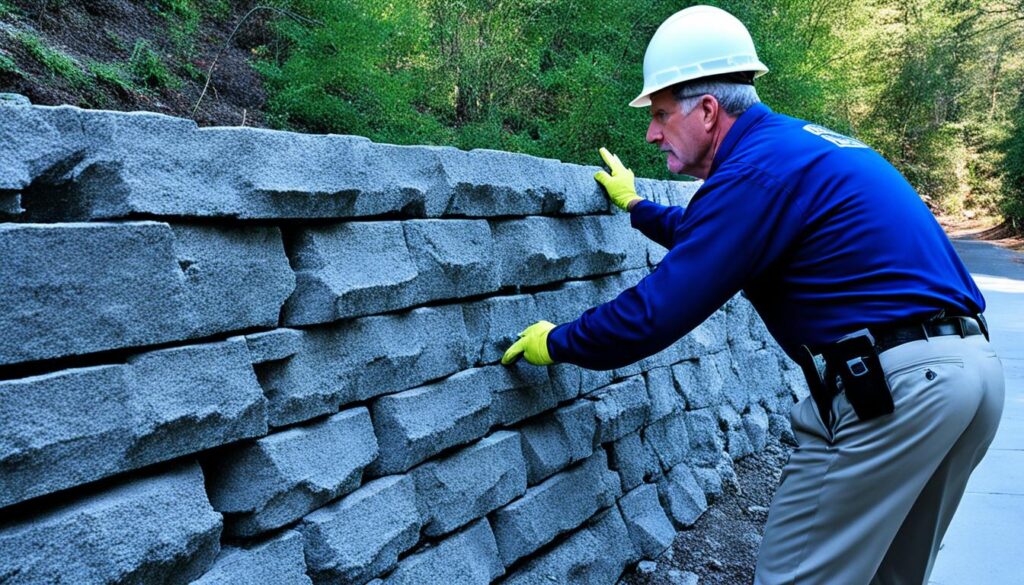
Material and Structural Guidelines
The type of materials you can use for retaining walls in Long Island affects the permit process. Concrete walls often need a closer look compared to those made of gravel. Plus, projects that cover more ground must plan to handle 2 1/2 inches of rain. This helps control erosion and holds stormwater on site. These plans must be made by experts.
New developments must also include ways to control erosion and keep stormwater on site forever. Following these rules is key to meeting Long Island’s building codes. It also prevents structural problems later on.
Common Challenges in Permitting Process and How to Overcome Them
Getting a permit for a retaining wall on Long Island isn’t easy. There are many issues to face. It’s crucial to handle these problems well to meet rules and keep your project moving.
Documentation and Compliance Issues
Documentation issues and sticking to rules are big hurdles. Long Island’s building codes are strict. A small mistake in paperwork can cause delays and fines. Many people forget how important it is to have complete documentation. Missing items like detailed site plans can slow down your project.
There’s also the need for different permits, like those related to environmental issues. Your application must show you follow these rules to avoid harming nature. To handle paperwork well, do your research before applying. If you can, get advice from a Long Island permit expert.
Inspection and Approval Delays
The inspection process is key to getting the go-ahead for your retaining wall. But, it’s often a time when things slow down. In some places, waiting for a permit review can take as long as six months. Delays can make things more expensive and complicated.
To cut down on wait times, talk to local authorities early. Having a check done before you apply can highlight issues sooner. This way, you can fix problems quickly. Also, knowing the building code well can make getting approved faster.
To avoid permit issues, handle paperwork carefully and plan for inspections. These steps help keep your project moving smoothly. Then, you can finish your retaining wall without problems.
Conclusion
Getting a permit for a retaining wall in Long Island is crucial if you own a home and want to make some changes. The permit makes sure the wall follows the rules. This leads to a safe and successful project that meets the community’s standards.
Dealing with local codes can be complex. It’s wise to prepare well and have all your paperwork ready. Having the right documents, like surveys and plans, can prevent delays and extra costs. You might also need to work with different departments, depending on your project’s size.
In Long Island, hiring a professional like Tracis Permits can make getting a permit easier. They help increase your chances of getting approved fast and successfully. By following these tips and working with experts, you can improve your property’s value. Plus, you’ll make sure everything is done legally, from start to finish.
